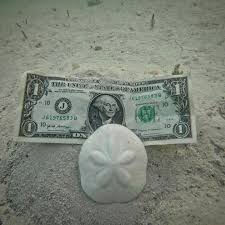
The Sand Dollar A Marine Marvel
The Sand Dollar: A Delicate Treasure from the Sea
Sand dollars, those flat, disc-shaped marine creatures often found washed up on beaches, are more than just souvenirs. They are fascinating creatures with a unique biology and a fascinating history.
Biology and Anatomy
Sand dollars are echinoderms, related to starfish and sea urchins. They have a five-rayed symmetry and a porous skeleton made of calcium carbonate. Unlike their spiny cousins, sand dollars have a smooth, flattened body that is covered in tiny hairs called cilia. These cilia help sand dollars move along the ocean floor and filter food from the water.
Sand dollars are primarily found in shallow, sandy areas of the ocean. They burrow into the sand to protect themselves from predators and to find food, which includes algae, small invertebrates, and organic matter.
The Five-Petal Design
One of the most striking features of sand dollars is their five-petal design. These petals are actually holes in the skeleton that allow water to circulate through the animal’s body. The five-petal design also helps sand dollars move and burrow through the sand.
The Color of Sand Dollars
Sand dollars are typically white or light brown in color. However, they can sometimes be found in other colors, such as pink, purple, or green. The color of a sand dollar can vary depending on its age, diet, and the environment in which it lives.
The Role of Sand Dollars in the Ecosystem
Sand dollars play an important role in the marine ecosystem. They help to aerate the sand, which is beneficial for other marine organisms. They also consume organic matter, helping to decompose and recycle nutrients in the ocean.
Sand Dollars as Fossils
Sand dollars are often found as fossils. Their hard, calcified skeletons preserve well in sedimentary rocks. Fossil sand dollars can provide valuable information about ancient marine environments and the evolution of life on Earth.
Sand Dollars as Souvenirs and Decorations
Sand dollars are popular souvenirs and decorations. They are often used in crafts, jewelry, and home decor. However, it is important to note that collecting sand dollars from the beach can harm marine ecosystems. If you want to collect sand dollars, it is best to purchase them from a reputable source.
In conclusion, sand dollars are fascinating marine creatures with a unique biology and a long history. They are not only beautiful to look at but also play an important role in the marine ecosystem. Whether you are a beachcomber, a collector, or simply someone who appreciates the beauty of nature, sand dollars are a treasure to be admired.



